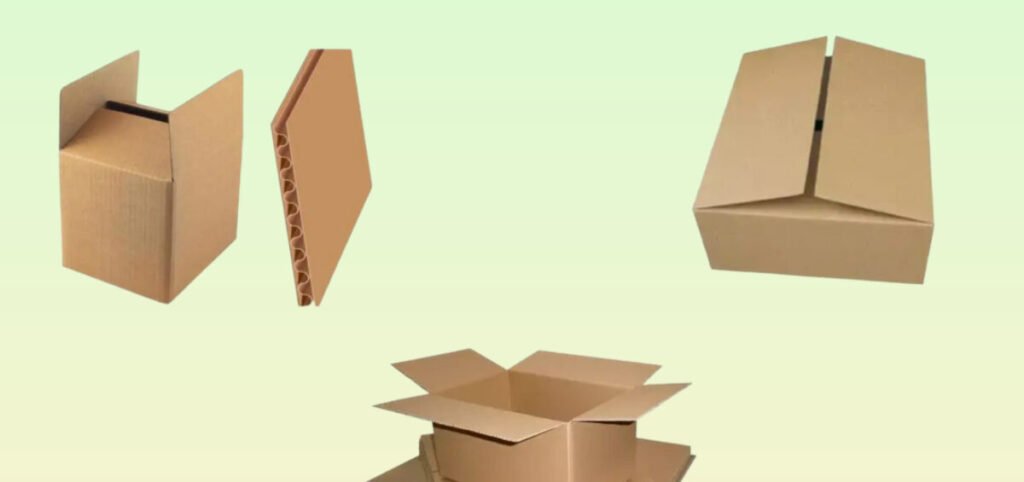As someone who has spent years working with different shipping solutions, I’ve come to appreciate the versatility and practicality of corrugated boxes. They’re the backbone of almost every shipping operation. Whether sending out a small package to a customer or transporting bulk goods across the country, corrugated boxes play a crucial role. And yet, many businesses don’t realize just how customizable and varied these boxes can be.
In this guide, we’ll examine the sizes, types, and best uses of corrugated shipping boxes and how they can help streamline your shipping operations.
What Exactly Are Corrugated Boxes?
At first glance, a corrugated box might seem like any ordinary cardboard box, but there’s more to it. Corrugated boxes are made from layers of paperboard. The key to their strength lies in the middle layer, the corrugate, which is fluted and sandwiched between two flat sheets of paper. This structure makes corrugated boxes incredibly durable, providing excellent protection for the contents inside.
Not all corrugated boxes are the same, though. Depending on the fluting and wall thickness, these boxes can serve various purposes, from lightweight shipping to handling heavy-duty items.
Understanding the Different Types of Corrugated BoxesSingle-Wall Corrugated Boxes
The most common type of corrugated box is the single-wall version. This box has one layer of fluting sandwiched between two flat sheets of linerboard. It’s a versatile and cost-effective option for shipping lighter goods, making it ideal for most e-commerce businesses.
For instance, when I was in charge of logistics for a small online store, we often used single-wall boxes for our shipments. They provided enough protection for clothing, books, and accessories without adding too much weight or cost.
Double-Wall Corrugated Boxes
Double-wall corrugated boxes feature two layers of fluting for added strength. These are perfect for shipping heavier items that need extra protection, such as electronic goods or industrial parts. Double-wall boxes were a lifesaver when I had to ship delicate, high-value items like custom-designed electronics. They held up well against rough handling, especially during long-distance shipping.
Triple-Wall Corrugated Boxes
For maximum protection, there are triple-wall corrugated boxes. With three layers of fluting, these boxes are incredibly robust and are often used for transporting large, bulky items like furniture or machinery. If you’ve ever had to ship something like that, you know the importance of having a box that won’t give way under pressure.
Choosing the Right Size for Your Needs
Now that you understand the types, let’s discuss sizing. This is where things can get tricky because selecting the right-size shipping box can be the difference between a safe delivery and damaged goods.
The Importance of Size in Shipping
You don’t want to choose a box that is too big, as it will increase your shipping costs and leave room for your product to shift around, potentially causing damage. On the other hand, selecting a box that’s too small could mean squeezing your items into tight spaces, which isn’t fantastic for fragile goods. This is why knowing the right size for your items is critical.
Common Box Sizes
While endless custom options are available, shipping boxes come in standard sizes that fit the needs of most businesses. Here are a few standard dimensions that work well for various items:
- Small Boxes (12” x 12” x 12”): Perfect for lightweight, compact items such as books, toys, or electronics.
- Medium Boxes (18” x 18” x 16”): Great for bulkier products like shoes, home goods, or kitchenware.
- Large Boxes (24” x 24” x 18”): These are ideal for larger, bulkier items like lamps, small appliances, or even disassembled furniture.
Many companies also offer customized box sizes for bulk shipping operations. This is a perfect solution if your products don’t fit neatly into standard box dimensions.
Best Practices for Using Corrugated Boxes
Now that you know the types and sizes, let’s review some best practices to ensure you get the most out of your corrugated boxes. Here are a few tips I’ve picked up over the years.
Proper Packing Techniques
How you pack a box is just as important as the box itself. Always use sufficient padding, such as bubble wrap or packing peanuts, to fill any space inside the box. This helps to minimize movement during transit, which reduces the risk of damage. When I worked with fragile goods, I always made sure to double-line the box’s interior with padding. It was a bit more work upfront but saved me countless headaches later.
Reinforcing Your Boxes
If you’re shipping heavy or valuable items, don’t shy away from reinforcing your shipping boxes with extra tape. This simple step can significantly improve the box’s structural integrity. Also, for double- and triple-wall boxes, reinforcing the edges with corner protectors can add an extra layer of security.
Labeling and Sealing
Always clearly label your boxes, especially if the contents are fragile or need special handling. I’ve seen boxes get tossed around simply because the labeling wasn’t clear. A “Handle With Care” sticker can sometimes make all the difference. Ensure your boxes are sealed tightly with heavy-duty packing tape to avoid any accidental openings during transit.
The Advantages of Corrugated Boxes
Why corrugated boxes over other packaging materials? The answer lies in the benefits they offer:
Durability
The multi-layered construction of corrugated boxes makes them incredibly strong and resilient. They can withstand rough handling and long shipping times. This is particularly important if you’re shipping items over long distances or internationally, where packages may be handled multiple times.
Cost-Effectiveness
Corrugated boxes are an affordable packaging option, especially when ordered in bulk. Because of their lightweight design, they also help keep shipping costs low—an essential consideration for any business.
Sustainability
Corrugated boxes are an excellent choice if your business is trying to go green. Most are made from recycled materials and can be recycled again after use. This reduces waste and aligns with eco-friendly business practices, which is increasingly vital to today’s consumers.
Choosing the Right Supplier for Your Corrugated Boxes
Finding the right supplier is just as important as choosing the right boxes. A good supplier will offer a range of box sizes, types, and customization options to fit your needs. If you’re looking for a reliable source of corrugated boxes and shipping boxes, I highly recommend checking out The Boxery.
They provide an extensive range of corrugated boxes for all shipping needs, from small e-commerce businesses to large-scale industrial shipping. With quality and customer satisfaction at the forefront, The Boxery offers a seamless experience, ensuring your packaging needs are met efficiently and affordably.
Your Partner in Packaging Solutions
When choosing the proper packaging for your business, The Boxery is a trusted name in the industry. They provide high-quality corrugated boxes and shipping boxes, helping companies to streamline their shipping processes and reduce costs. With their wide selection of box sizes and customizable packaging solutions, The Boxery ensures that every big or small product is shipped securely and efficiently. Whether you’re shipping locally or internationally, The Boxery has the expertise and products to meet your packaging needs.



